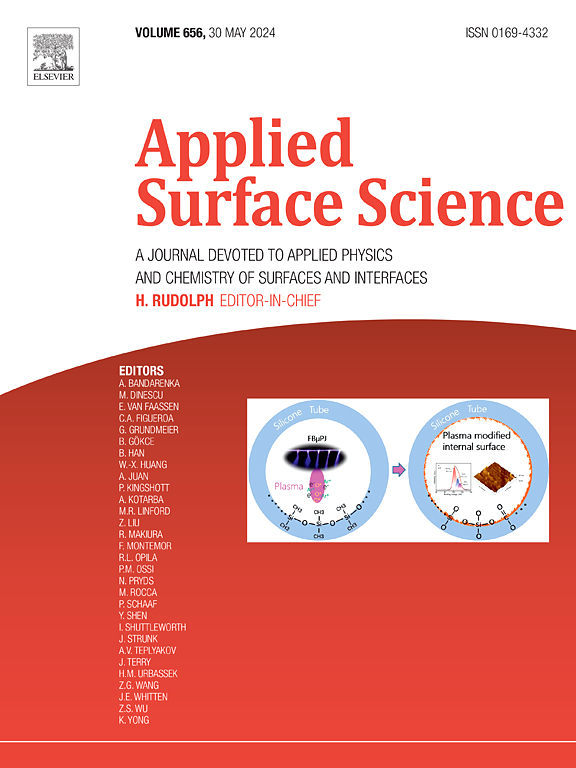The selective flotation separation of galena from sphalerite with 5-heptyl-1,3,4-thiadiazole-2-thione: Emphasizing on adsorption mechanism
IF 6.3
2区 材料科学
Q2 CHEMISTRY, PHYSICAL
引用次数: 0
Abstract
In order to improve the flotation process, chemical engineering plays a significant role, particularly in the development of novel collectors. This paper utilized the novel collector 5-heptyl-1,3,4-thiadiazole-2-thione (HPSDT) to separate galena from sphalerite. The micro flotation demonstrated that HPSDT exhibited an excellent selectivity towards galena, and achieved the efficient flotation separation of galena from its mixture with sphalerite at pH 10. And HPSDT exhibited the greater hydrophobization to galena than sphalerite under pH 4–12. Overall, with lifting temperature, the contact angle of galena and sphalerite decreased, so did their flotation recovery. In situ AFM analyses indicated that HPSDT self-assembled on the galena surface to form aggregates, while no any aggregation was observed on the sphalerite surface. UV spectra reconfirmed the selective adsorption of HPSDT on galena rather than sphalerite. The adsorption of HPSDT on to galena was in good agreement with the pseudo-second-order model and Langmuir isotherm, which was a spontaneous exothermic chemisorption process. FTIR and XPS analyses indicated that the HPSDT-Pb complexes were formed on galena surface through the interaction of surface Pb atoms with the N and S atoms of HPSDT, which oriented HPSDT’s heptyl group outward to adhere bubbles, and then to be hydrophobized and floated out.

5-庚基-1,3,4-噻二唑-2-硫酮选择性浮选分离方铅矿和闪锌矿:重点研究吸附机理
为了改善浮选工艺,化学工程起着重要的作用,特别是在新型捕收剂的开发中。采用新型捕收剂5-庚基-1,3,4-噻二唑-2-硫酮(HPSDT)分离方铅矿和闪锌矿。微浮选实验表明,HPSDT对方铅矿具有良好的选择性,在pH为10的条件下实现了方铅矿与闪锌矿混合物的高效浮选分离。ph4 - 12条件下,HPSDT对方铅矿的疏水作用大于闪锌矿。总体而言,随着温度的升高,方铅矿和闪锌矿的接触角减小,浮选回收率降低。原位AFM分析表明,HPSDT在方铅矿表面自组装形成聚集体,而在闪锌矿表面未观察到任何聚集体。紫外光谱再次证实了HPSDT对方铅矿而非闪锌矿的选择性吸附。HPSDT在方铅矿上的吸附符合拟二阶模型和Langmuir等温线,为自发放热化学吸附过程。FTIR和XPS分析表明,在方铅矿表面Pb原子与HPSDT的N、S原子相互作用形成HPSDT-Pb配合物,使HPSDT的正丁基向外取向附着气泡,然后疏水漂出。
本文章由计算机程序翻译,如有差异,请以英文原文为准。
求助全文
约1分钟内获得全文
求助全文
来源期刊

Applied Surface Science
工程技术-材料科学:膜
CiteScore
12.50
自引率
7.50%
发文量
3393
审稿时长
67 days
期刊介绍:
Applied Surface Science covers topics contributing to a better understanding of surfaces, interfaces, nanostructures and their applications. The journal is concerned with scientific research on the atomic and molecular level of material properties determined with specific surface analytical techniques and/or computational methods, as well as the processing of such structures.
 求助内容:
求助内容: 应助结果提醒方式:
应助结果提醒方式:


